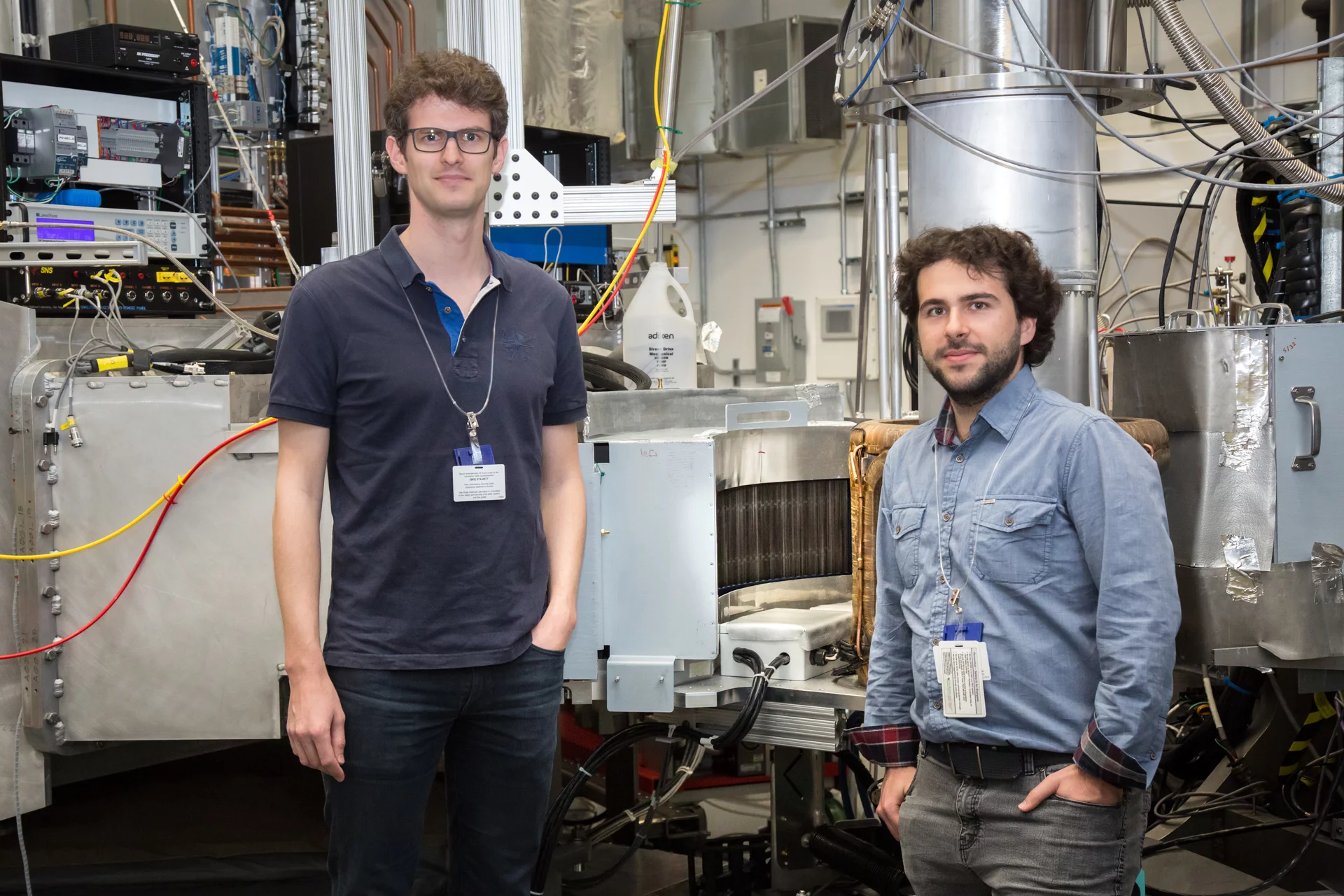Numerous intriguing behaviours have been observed already in magnetic materials known as spin ices. But now for the first time direct manifestations of quantum mechanical effects have been seen in such a system.
Spin ices are crystalline materials with rather peculiar magnetic properties. The atoms in their lattices are arranged in geometries that resemble that of frozen water — hence the ‘ice’ in the name — and the specific local order of the electronic spins prevents the formation of a single state of minimal energy. When such systems with degenerate ground states remain dynamic even at zero temperature, they are collectively known as quantum spin liquids, and they have long attracted substantial interest from theorists and experimentalists alike, as they harbour a wealth of exotic physics.
In the case of spin ices, for all their complexity, these systems can typically still be described in the framework of classical physics. That situation is about to change now, thanks to an international collaboration led by Romain Sibille from the Laboratory for Neutron Scattering and Imaging at PSI. As they report in Nature Physics this week [1], the team presents strong evidence that they have identified the physics of a ‘quantum spin ice’ in a crystal of praseodymium hafnium oxide (Pr2Hf2O7).
From magnetic monopoles to artificial photons
A famed example of exotic behaviour in spin-ice materials is that of magnetic monopoles. For electrically charged particles, it is readily possible to separate positive and negative charges; think about a battery, for example. In a magnet, in contrast, the north and south pole cannot be separated. At least not for objects like bar magnets. But in magnetic spin ices, the magnetic moments in the material interact in such a manner that separate magnetic charges can emerge — not as elementary particles, but as ‘quasi-particles’ associated with excitations. From the interactions of the spins in the spin-ice configuration novel effects such as magnetic monopoles emerge. But exotic as these phenomena may be, they can be still fully described with the framework of classical magnetostatics.
An intriguing question then is what happens when quantum effects are thrown into the mix. Theoretical work has predicted that quantum-mechanical tunnelling between different spin-ice configurations can lead to excitations that are qualitatively different from those in classical spin ice. In the latter case, the quasi-particles associated with the excitations can be thought of as electrostatic charges. In contrast, in quantum spin ice, behaviour emerges that is described by quantum electromagnetism. That is, quantum fluctuations bring an emerging dynamic electromagnetic field into play. This leads to a rich set of novel phenomena: not only should variants of magnetic monopoles appear in quantum spin ices, but also electric monopoles (equivalent to electric charges) and excitations that behave like photons.
Experimental evidence of exotic excitations
The experimental realisation of a quantum spin ice, however, proved extremely challenging. But through a unique combination of advances in theory, material synthesis and measurement technology, the PSI-led team has now successfully detected clear signatures of emergent quantum electrodynamics in a quantum spin ice in neutron-scattering experiments. In collaboration with colleagues at the University of Warwick (UK), they produced high-quality single crystals of Pr2Hf2O7, and from work of co-workers at the Okinawa Institute of Science and Technology (Japan) they had specific predictions regarding the experimental signatures to look for. The experiments to detect these signatures, finally, were performed at the Institut Laue–Langevin in Grenoble (France) and at the Oak Ridge National Laboratory (US). At the latter facility, a key instrument used was the HYSPEC spectrometer, where an array of ‘supermirrors’ designed and built at PSI is used to analyse the polarization of the neutrons scattered by the sample. It was shipped to the Oak Ridge National Laboratory in 2015, where Sibille and his colleagues were among the first users of the new apparatus.
And indeed they put the spectrometer to good use. With the successful detection of signatures of a quantum spin ice in Pr2Hf2O7 — including emergent photons as well as magnetic and electric monopoles — the door is now open for the exploration of an novel set of physical phenomena in spin-ice systems, moving from emergent magnetostatics to the emergent quantum electrodynamics.
Contact
Dr. Romain SibillePaul Scherrer Institut, 5232 Villigen PSI, Switzerland
Phone: +41 56 310 3580, e-mail: romain.sibille@psi.ch
Original Publication
1. Experimental signatures of emergent quantum electrodynamics in Pr2Hf2O7Sibille R, Gauthier N, Yan H, Ciomaga Hatnean M, Ollivier J, Winn B, Filges U, Balakrishnan G, Kenzelmann M, Shannon N, Fennell T
Nature Physics, DOI: 10.1038/s41567-018-0116-x (2018). (Free view)
Additional reading
PSI researchers seek existence of exotic quantum spin ice(Media release of the Oak Ridge National Laboratory, US)
Emergent excitations from a quantum spin ice
(Media release of the Institut Laue–Langevin, France)
Seeing the light? Study illuminates how quantum magnets mimic light
(Media release of the Okinawa Institute of Science and Technology, Japan)


